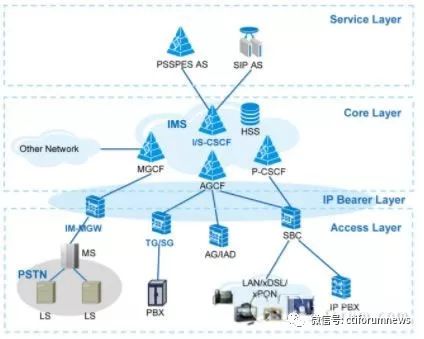IMS (IP Multimedia Subsystem) has been in development for over a decade. Initially, telecom operators offering both mobile and fixed-line services adopted IMS as a way to unify various access technologies, aiming to reduce network operating costs. However, as time passed, they realized that deploying IMS was complex and expensive, with cost savings falling short of justifying the investment for most operators.
As a result, the focus of IMS shifted from cost reduction to service innovation and revenue generation. Despite this shift, the lack of a "killer" application made it difficult to drive new business growth. By 2010, IMS was struggling, and for many telecom operators, it wasn't their top priority anymore.
In recent years, the situation for IMS has changed significantly. The push toward all-IP networks and the growing adoption of LTE have made voice over LTE (VoLTE) a key priority for mobile operators. They are focusing on delivering high-quality voice services over IP, and IMS is playing an important role in this transition.
At the same time, the industry is moving toward virtualized telecom operators. IMS offers a strong foundation for this shift because it separates service control (signaling) from the transport layer (media bearer). While service control is relatively easier to virtualize, the media transport can be more complex, and not all operators may choose to do so.
So, what does IMS have to do with SBC (Session Border Controller)? How can IMS and SBC work together? Let’s explore.

**IMS Network Architecture**
Although IMS doesn’t include the SBC function directly, it does handle signaling and media at the edge of the network, particularly at access and interconnection points. These functions go by different names depending on whether the system is based on TISPAN (fixed-line) or 3GPP (mobile). While the signaling elements are similar—using P-CSCF for access and IBCF for interconnection—the media handling differs. Mobile systems use A-BGF or C-BGF for access and I-BGF or TR-GW for interconnection.
In general, these edge functions in IMS resemble some of the capabilities of an SBC, but SBCs offer far more advanced features.
Dingxintongda SBCs typically provide the following functions in an IMS network:
1) **Signaling and Media Interaction Modifications**
This is crucial for IMS deployments. While IMS is good at standardizing SIP, real-world networks often need to interact with legacy SIP devices that don’t fully comply with IMS standards. Some devices follow IMS but not all versions, making interaction modifications necessary.
2) **Media Transcoding**
IMS supports both mobile and fixed-line devices, which operate in different environments and have varying network requirements. For example, HD voice: fixed-line devices often use G.722 due to its patent-free nature and bandwidth availability, while mobile devices prefer AMR-WB for better quality and royalty compensation through equipment costs. When a call crosses between mobile and fixed networks, transcoding is needed. An SBC at the network edge can handle this efficiently, preventing media packets from entering the core network.
3) **Legal Interception**
In non-IMS networks, an SBC with lawful interception capabilities can access both signaling and media at the network boundary, making it the ideal place to implement such functions.
4) **Security Features**
SBCs provide protection against DoS/DDoS attacks, detect abnormal devices, and monitor traffic. While IMS includes a secure framework with dynamic IPSec/TLS for user authentication, it lacks the ability to defend against DDoS attacks, which is a fundamental feature of SBCs.
5) **Service Level Agreement Enforcement (Capability Control)**
6) **Network Topology Hiding, Cross-Network and NAT Traversal, Bridging Different Environments**
7) **Connecting to PBX within the IMS Network**
These functions make SBCs essential in enhancing the capabilities of IMS, especially in areas like security, interoperability, and media management. As IMS continues to evolve, the integration with SBCs will play a vital role in ensuring seamless and secure communication across diverse networks.
FRP Ladders,frp cable ladder,fibergrate ladders,fibreglass cable ladder
Hebei Dingshengda Composite Material Co., Ltd. , https://www.frpdsd.com